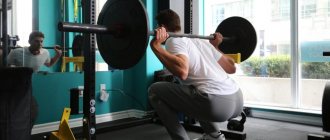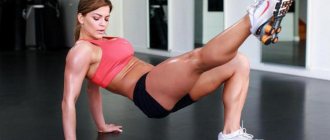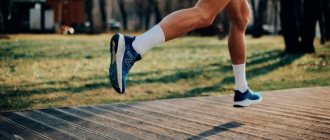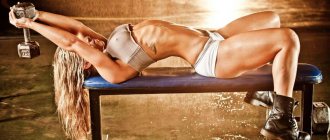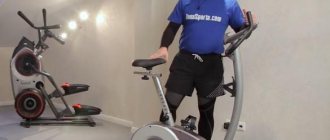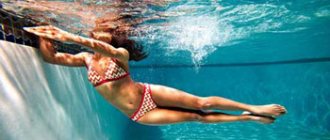Swimming is a unique type of physical activity. Particular attention is paid to the development of strength, endurance and coordination of movements. Professional swimmers try to improve these indicators not only in water, but also on land. Dry-land exercises for swimmers not only improve fitness, but also add variety to your training. The training program is developed by specialists and is aimed at improving the swimmer’s performance in the pool, and not at pumping up his muscle mass.
Swimming Features
First of all, you should consider the features of swimming:
- When moving in water, all muscle groups work simultaneously. To do this, it is necessary that the muscles of the whole body work not only simultaneously, but also that their movements are coordinated with each other and make the maximum contribution to the effective advancement of the swimmer.
- When moving in water, swimmers do not have any support for movement and they have to create it independently by muscle power; it is for this that the muscles of the trunk must be well developed and able to hold the entire body in the water.
- As the swimmer advances, he makes the same repetitive movements and if he does not have any additional training, then over time a muscle imbalance arises, that is, one group becomes much better developed than others, and this negatively affects health.
- For a swimmer, not only strength and endurance are important, but also flexibility. An insufficiently flexible body will not only become an obstacle when performing the technique, but can also lead to injury.
- The shoulder joints receive the greatest load when swimming. To avoid injury to these joints, you must carefully monitor your swimming technique.
Training series of the first type: work exclusively on speed and sprint [edit
Those swimmers who train in the “masters” category group devote a lot of time during training to developing their sprinting skills. This work involves developing maximum speed over short distances - from 10 to 200 meters - with long rest breaks between segments. Many swimmers find this type of training the best way to learn to swim faster. Of course, if you are competing at sprint distances (from 25 to 200 meters), then such series should take up a significant part of your training time, since they are designed to prepare for such starts. However, triathlons and open water involve training for distances of 400 meters or more, and too much sprint training can lead to decreased overall endurance. Next we will dwell on this point in more detail.
If you plan to compete in races under 200 meters, you need sprint training sessions. An alternative beneficial workout could be series to increase threshold levels and aerobic endurance.
Sprint training series involve long rest periods between segments so that the swimmer can maintain a high intensity during the swim. The ratio of work and rest in them can range from 3:1 to 1:1 (or more). An example of a series would be the following order of operation:
8 x 50 m in 40 s, rest 20 to 30 s between each 50 m segment
Appendix B describes sprint series that can be included in your training program if you are hoping to improve your speed in distances under 400 meters. If you are competing for more
long distances and doing five or more times a week, you can also include this type of training in your weekly program until you replace it with more important threshold training for you.
Dry swimming
Dry swimming is understood as a set of exercises on land for swimmers, aimed at facilitating the development of swimming technique, improving it, improving the swimmer’s physical fitness, and preventing injuries.
For professional swimmers, such classes are mandatory, and training outside the pool is given no less attention than training in the water.
The most popular dry exercises for swimmers are stretching exercises aimed at preventing shoulder injuries.
Warm-up video
Important! Before a competition, the period of time between warm-up and start should not exceed 5-10 minutes, otherwise the positive effect will disappear - you begin to cool down, your heart rate decreases, and the feeling of stiffness returns. It is not always possible to calculate the time correctly or have the opportunity to warm up in the water. In this case, you need to do a basic warm-up 60-30 minutes in advance and another short one before the start. The warm-up itself should be much shorter and less intense than we usually do during training.
Thus, warming up before swimming is aimed at working out the main muscles involved in the swimming process. This is not only physical, but also mental preparation before training, allowing you to show your maximum capabilities. After all, skills brought to automatism will leave no room for excitement! Swim correctly and avoid the most common mistakes!
Physical training of swimmers
Have you ever seen a professional swimmer? Slender, muscular, toned body. It is impossible to achieve this by training in the pool alone. Special exercises of the swimmer on land also play a big role here.
It is clear that swimming cannot be learned outside of water, but even without performing special exercises on land it is impossible to achieve at least some worthwhile performance in this sport. Therefore, if you dream of not just coming to “float around” in the pool, but want to achieve some result, pay more attention to strength and physical training outside the walls of the pool.
So what is the direction of a swimmer's training outside of the water? It is worth paying attention to fitness, stretching and strength training.
Back muscles are of great importance for a swimmer.
One of the most effective exercises for developing back muscles is “traction”. It involves not only the back, but also the shoulders and chest. Triceps can be effectively trained using a special machine. For biceps exercises, use dumbbells.
The final stage in working out the upper body will be the shoulders. Don't use too much weight when working these muscles, as there is a high chance of damaging them. Stand up straight, take dumbbells and spread them to the sides. To pump up your quadriceps muscles, extend your legs on the machine; the muscles of the back thigh will also be involved here. And of course, don’t forget about calves.
At the first preparatory stage, training regimens are planned for the swimmer in order to increase his muscle mass.
An athlete's nutrition plays a very important role during preparation for competitions. An athlete's diet should be rich and varied. During this period, you need to provide the body with sufficient amounts of proteins, fats and carbohydrates. Must be included in the diet; meat, fish, cottage cheese, fresh fruits and vegetables. For swimmers, achieving their maximum physical strength is not easy. Therefore, they have to adhere to a training regimen that will maintain not only their intramuscular tone, but also their intermuscular mass.
Power training
Strength training in the gym not only improves endurance, but also develops a swimmer's explosive power, which is of great importance in short distance swimming. But when performing strength exercises on land, the main thing for swimmers will be not to build up large muscle mass, as this will increase the body’s resistance in the water and, accordingly, reduce the speed of movement. In short, all professional swimmers are very strong, but at the same time slim.
When strength training swimmers, there are two exercise options:
- In order to develop strength and speed, dry land exercises for swimmers are performed with heavy weights and at maximum speed, but with a minimum number of repetitions.
- To improve coordination of movements and increase the number of mitochondria, on the contrary, perform exercises with light weight but with a large number of repetitions.
When drawing up a training program, you should take into account the swimmer’s specialization. If he works at short distances, then the most important thing for him is to develop explosive power and, therefore, perform the first group of exercises. If he specializes in long distances, then it is more important for him to develop endurance and the second option of strength training is suitable for him.
How to float
Our body itself knows how to float on water: thanks to our lungs, we can stay afloat and not drown. Once you realize this, it will be much easier for you to learn. And to consolidate the skill, there are simple exercises.
Exercise "star"
The “star” is performed on the back or chest. The exercise helps you understand that with the correct body position you can lean on the water. The “star” on the chest is done like this:
- Go into waist-deep water.
- Raise your hands and take more air into your lungs.
- Push off the bottom and lie with your chest on the water.
- Extend your arms and legs to the sides. The face should be facing down.
The main thing is to straighten your limbs and spine. In this position, like a starfish, you will increase the area of pressure of your body on the water and will not sink under your own weight.
The exercise can be complicated: raise your head while lying on the water. Buoyancy will decrease, but you will understand that swimming with your head under the water is much more convenient.
For the “star” on your back, the execution algorithm is approximately the same: inhale deeply, lie on your back in the water, stretch your arms and legs in different directions. This option is a little more complicated, but it is a good way to overcome your fear of water.
Float exercise
“Float” helps you feel that thanks to the air in your lungs, your body can stay afloat regardless of your weight. Despite this, experts advise doing the exercise at shallow depths: the water should reach up to your chest, so that if something happens, you can immediately straighten up and rest your feet on the bottom.
You need to do the exercise like this:
- Take a deep breath.
- Pull your knees to your chest, clasp your hips with your hands.
- Lower your head under the water and press it to your knees.
- Don't panic, let the water push you to the surface.
Thanks to the air in your lungs, your body will turn its back upward and you will begin to float up like a float. You just need to find balance and slowly exhale the oxygen supply. And to avoid the temptation to take a breath, you can pinch your nose with a special clothespin.
Kifut exercises
These exercises are deservedly called golden, and they are aimed primarily at training swimmers. Such exercises on land for swimmers without equipment are aimed at increasing muscle flexibility and elasticity and improving posture.
Execution rules:
- For three weeks, perform the exercises daily or at least five times a week. After this time, two or three executions per week will be sufficient.
- Do exercises no later than two hours before bedtime.
- Don't overexert yourself when doing exercises. If you feel that you are not yet able to do them all, feel free to reduce the number of exercises. Gradually you will be able to complete the entire program.
- If you are not yet able to complete all the exercises, then alternate them so that you put stress on different muscle groups.
- Breathe freely, do not hold your breath under any circumstances.
There are several types of exercises:
- Dry land exercises for spinists.
- Land exercises for breaststroke swimmers. They take into account all the features of this type of swimming.
- Dry land exercises for crawl. In some cases, they will have to be performed with an assistant.
- Land exercises for butterfly. This is a large, but necessary complex for an athlete.
In addition to the above, exercises on land for swimmers for the back from A. I. Postovoy (Postovoy) are popular among swimmers. These exercises are demonstrated in the video below.
Why do you need a warm-up?
The importance of warming up before swimming cannot be overestimated. Its implementation cannot be ignored, since the effectiveness of training or results in competitions directly depends on preliminary preparation. For amateur or professional swimming to be beneficial, it is necessary to approach the training process consistently.
So, proper warm-up is necessary for:
- warming up muscles, increasing joint flexibility and ligament elasticity. This allows you to improve your sense of water, overall coordination, and easily vary your swimming speed.
- preparation of the cardiovascular system. Intense blood circulation and increased heart beats make it possible to get fully involved in work even at the strata
- conservation of strength. It has been proven that a swimmer who pays sufficient attention to preliminary exercises reduces energy costs by 30
- avoiding injuries - reducing the risk of muscle tears and sprains
- psychological preparation – allows you to focus on the upcoming training or competition, repeat the elements you have completed and tune in to the result
- Relieving hypertonicity of the main muscle groups
Thus, preliminary physical exercises are the key to productive training and success in competition. A proper warm-up allows you to activate the body’s internal reserves and mentally prepare.
Workouts with an elastic band
This simulator is used to develop stroke strength and is at the same time a fairly simple device, but at the same time very effective. One of the advantages of such a simulator is its mobility. In addition, it can be used constantly, both before competitions and during the preparatory period or during the recovery period.
Before starting classes, be sure to warm up well, especially for the shoulder joints and muscles. In addition to the usual warm-up, it is good to do general physical training exercises - push-ups, abdominal crunches and pull-ups.
At the end of exercising with an elastic band, you should do a cool-down to relieve the load on the upper spine. It will also be good to add some yoga exercises, for example, the classic plank.
Necessary accessories
Before you begin practical swimming lessons, you should prepare a number of accessories:
- swimsuit (for training, it is advisable for girls to choose a one-piece swimsuit);
- swimming cap;
- glasses to protect eyes from irritation;
- bag for going to the pool with a compartment for wet clothes.
For people with poor eyesight, it is advisable to purchase glasses with diopters to see clearly under water.
Mistakes when exercising with an elastic band
- The main mistake beginners make is that they do not control the return of their hands to their original position, i.e., having made a stroke, he relaxes his hands, allowing the elastic band to make a spontaneous jerk in the opposite direction. Doing this will certainly lead to injuries and dislocations of the shoulder joint, perhaps not immediately, but in the future you will be guaranteed illnesses.
- The second mistake is a large number of repetitions. Performing 50 repetitions or more will not improve your stroke strength, but it will definitely “kill” your back and shoulders. Train your stroke strength in the pool - that's where you can swim forever.
- Don't train with an elastic band more than three times a week. Exercising daily will do more harm than good.
- Do the exercises while standing. Lying on the mat, you are in a relaxed state and will not be able to control the movements of your arms in time when rowing, which will lead to injuries to your shoulder and upper spine.
Movement technique
The back crawl technique consists of the following elements:
- the body is in a horizontal position and elongated. In the process of swinging your arms, your shoulders make slight turns;
- the head is always motionless, the gaze is directed upward;
- legs are straight, slightly bent at the knee and make scissor-type movements;
- arms are straightened, moving above the water in a “semicircle” trajectory.
For a better understanding, let's study each point separately.
Body position
To make it easier to maintain a straight and high body position, your gaze is always directed upward. Also keep your stomach pulled in - this allows you to create the desired arch in your back. While moving, the body makes turns, due to which the speed of movement increases.
Please note that the swimmer must glide through the water. To do this, the legs should not be bent at the hip joint.
How to hold your head
After you have assumed a horizontal body position, you should check your head and neck.
Relax your muscles, achieve a horizontal position of your head so that your ears are submerged under the water and the water line runs in the middle of your cheek. Lift your chin up. You can experiment with this by raising it higher or lower. 3-5 centimeters will be enough.
You should not turn your head from side to side - this can cause you to lose your balance and correct body position.
Hand movement
In backstroke swimming, the arms act as the main engine, so proper movement technique is the key to speed. The cycle performed by hand consists of 4 phases:
- Influx. The palm is tightly closed, the hand is immersed, starting with the little finger, and turns in the water perpendicular to the body.
- The main element is the elbow turns back and down, the arm straightens at the hip.
- Exit from the water. The hand is quickly raised with the little finger up. At this moment, the body turns, following the shoulder.
- The carry is carried out with a completely straight hand at an angle of 180 degrees above the water.
It is necessary to work out the cycle until it is fully automatic.
Leg movement
Let's study in detail the technique of leg movement. She must comply with the following rules:
- The legs move alternately, the strongest blow occurs when the leg moves from bottom to top. At this moment she fully unbends.
- When moving the limb from top to bottom, it is almost completely relaxed and straight.
- The leg bends when it is below the body.
From the outside it may seem that your legs help push water out. But in fact, by performing this cycle, they help push the body out of the water, after which it glides along the surface thanks to powerful arm movements.
